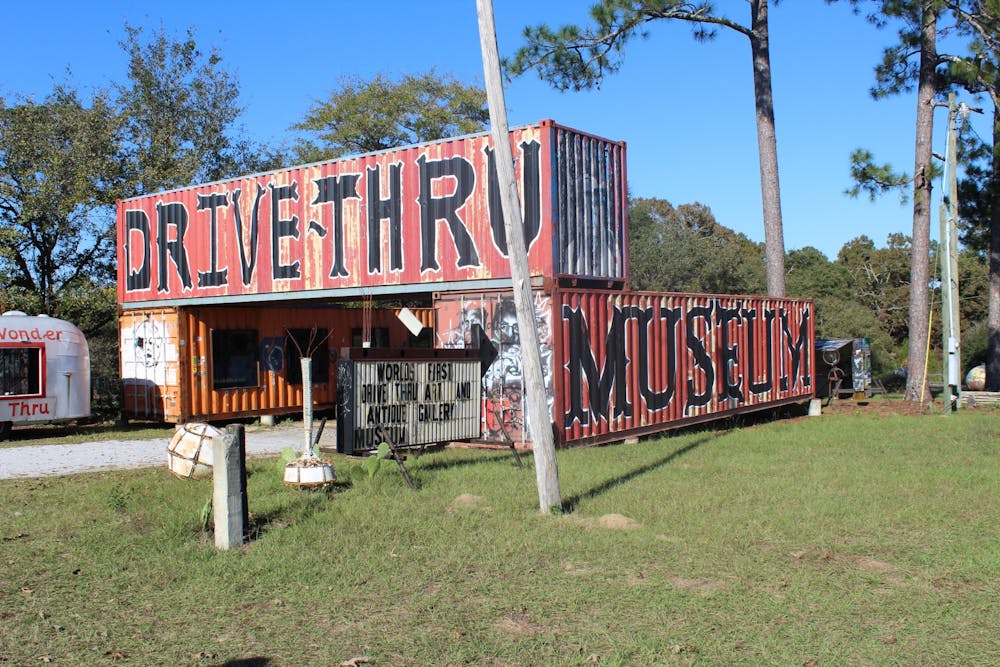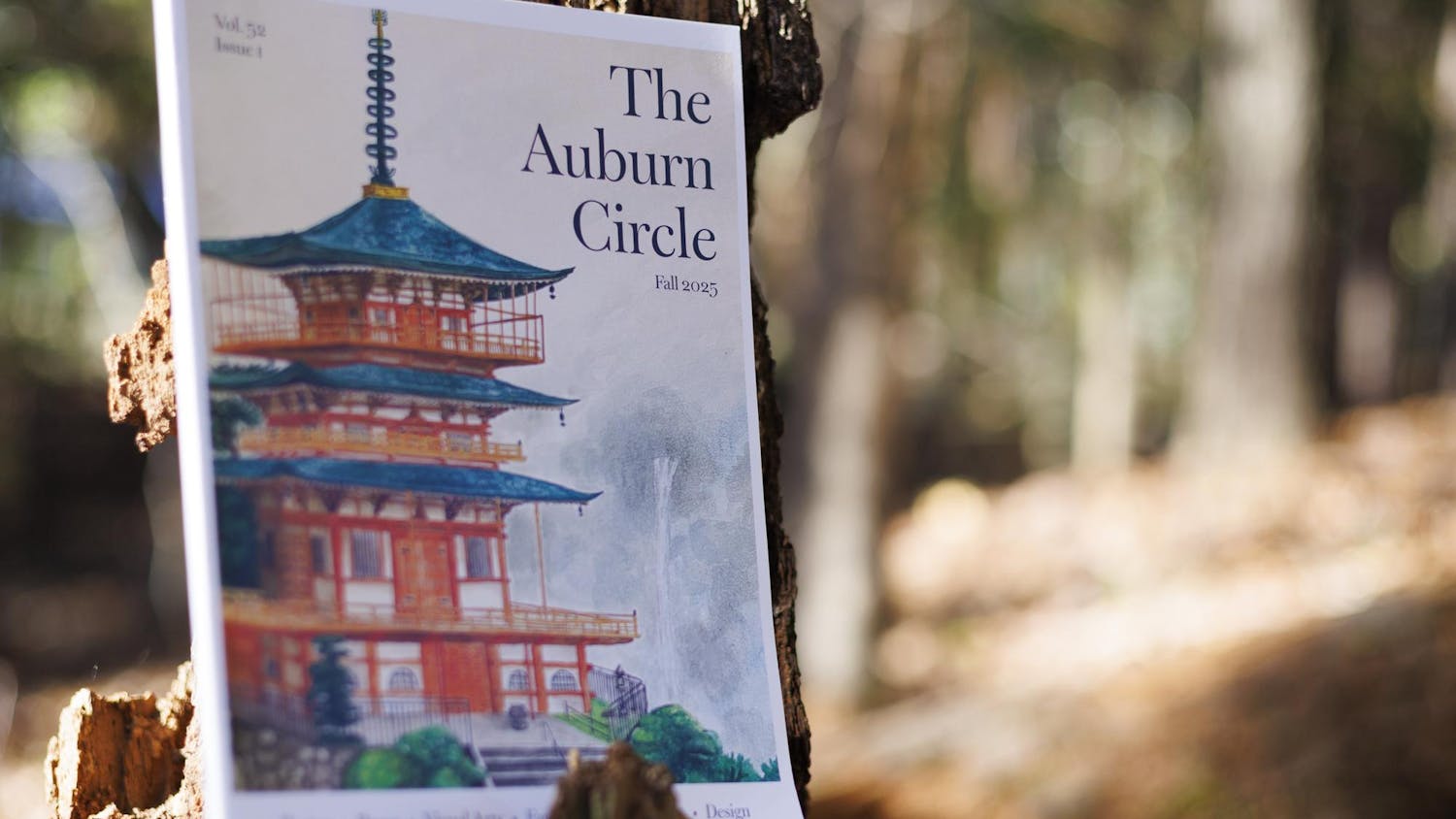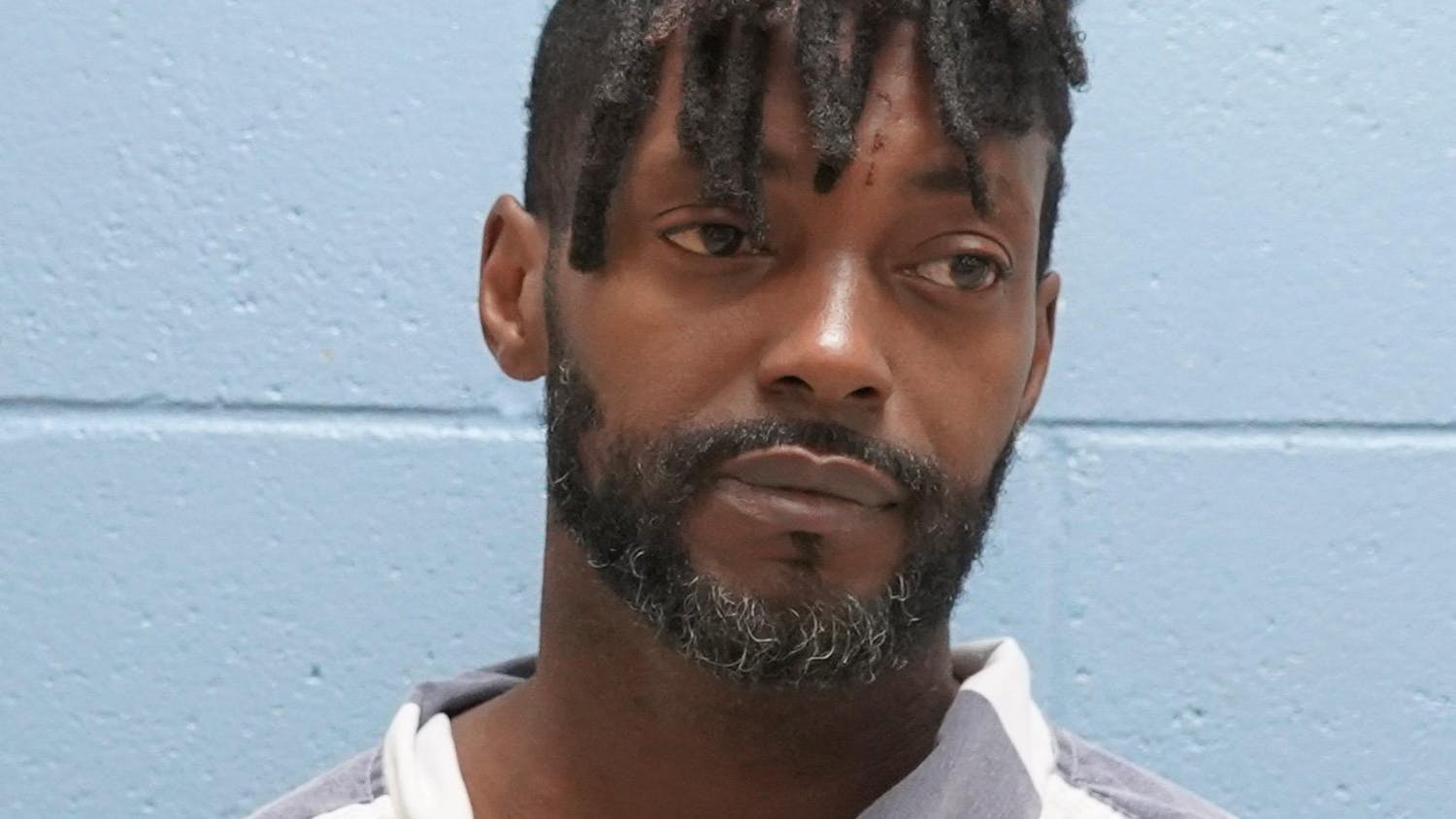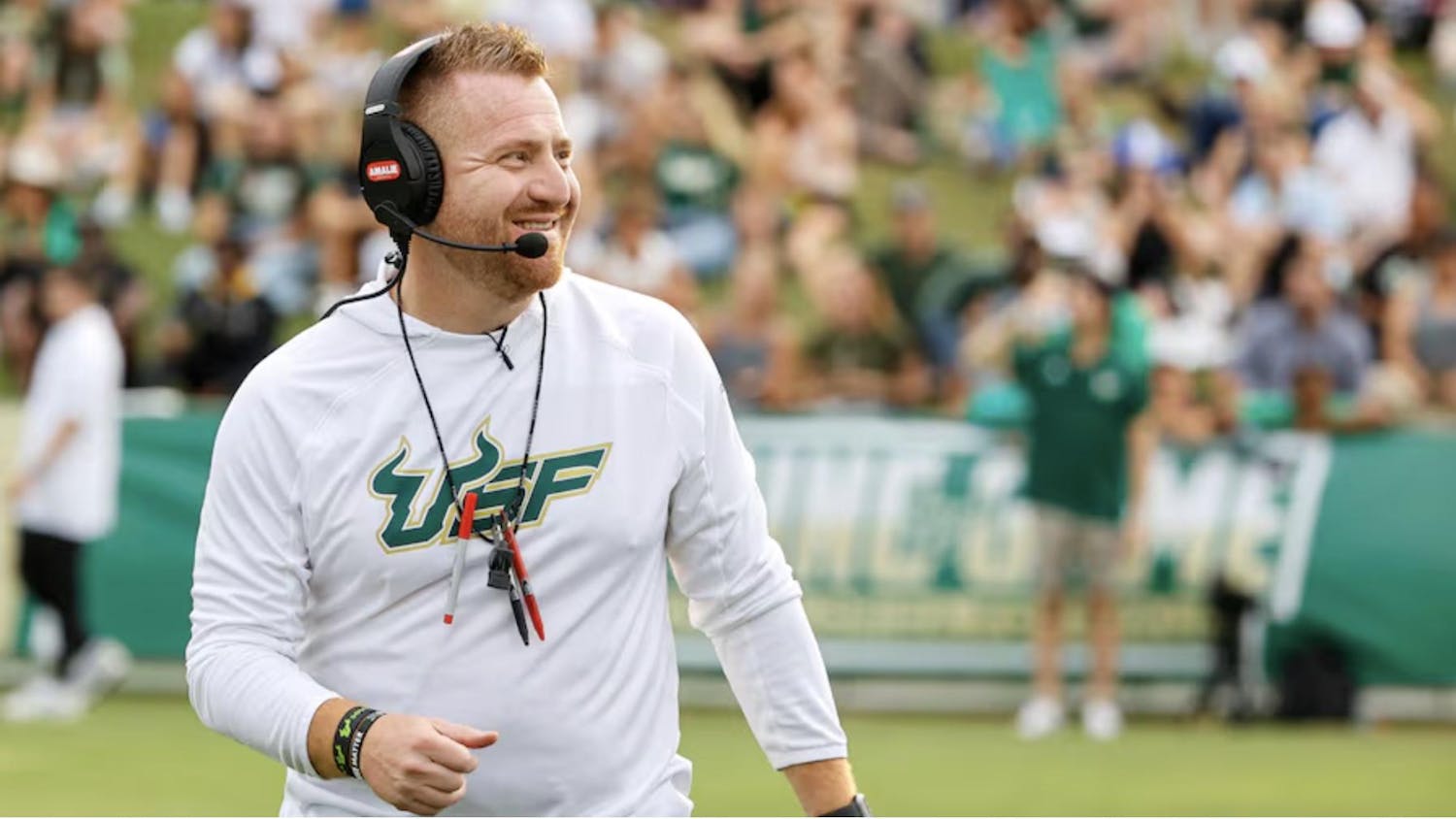“The World’s First Drive Thru Art and Antique Gallery,” reads the marquee sign in front of The Museum of Wonder. In the sleepy town of Seale, 26 miles from Auburn, modern pace was not the impetus for this World’s First; it was something only local folk artist Butch Anthony could have dreamed of.
The four 40-foot long shipping containers bought on retirement in Atlanta serve as the museum’s masthead, beckoning commuters of County Road 431. Lined horizontal to one another with a top bridging section, windows installed in the front, these containers house the museum’s artifacts. These include, but are not limited to, paintings, sculptures, fossils, bones, antiques, preserved snakes, organs, turnips and taxidermy.
In the rear sits the Barter Tree, where visitors are encouraged to “leave anything, take anything.” Offerings from this summer ranged from knick-knacks to Black & Mild cigarillos.
There is a story behind every physical object in the Museum of Wonder, including the containers themselves. As visitors from out of town swelled, the steel corral was birthed.
“I had the museum down at my house since I was 14, but I had so many folks coming through that I had to put up a gate to keep them out,” Anthony said. “Everybody was getting mad, so I just said, ‘put it up on the highway there’.”
Not long after, Anthony had to give up his annual Doo Nanny, an outdoor DIY camping and art festival, for similar reasons.
“We did that for 13 years, but we don’t do it anymore. It got too big,” Anthony said.
In a 2010 interview with the New York Times, Anthony was prepping the Doo Nanny, filling up a barrel with water as a precaution for the 100-foot effigy of female anatomy he was preparing to burn. Asked for the reason behind this particular effigy, he replied, “They’ve got a burning man, why not have a burning woman?”
Bones are often seen in Anthony’s works interposed on classic paintings, daguerreotypes and high school yearbook photos.
“When I was about 14, I found a dinosaur bone in the creek bed,” Anthony said. “So, I put that in my old barn down there and put a little piece of velvet on a pedestal and put that bone on it.”
The local paper learned of Anthony’s discovery, and shortly after, he became acquainted with some Auburn paleontology professors who later determined the bone to be around 65 million years old“… it’s been nothin’ but bones since then,” he said.
Anthony attended Auburn in the mid 1980s studying zoology, geology and biology. He began to develop his own genre coined “Intertwangleism.” Anthony’s website addresses the etymology: “inter = to mix; twangle = a distinctive way of speaking, thinking, behaving, assessing; and ism = a theory.”
The contents of the Museum of Wonder are indeed a mix. There is Anthony’s own work, and then there are the items collected or brought to him over the years. Included in the last group is “Revelations,” a series of eight suitcases containing Paper Mache dioramas of a hellscape, much like Dante’s, but demons are replaced by giant reptiles and octopi biting the heads off sinners. The piece was donated by an Athens, Alabama woman whose father was a preacher in the 1930s.
“It was a traveling preacher that went around and would scare the hell out of all those kids with that thing in Sunday school,” Anthony said.
There is a preserved turnip in a jar of formaldehyde which reminds Anthony of a long-time friend’s contribution, the late John Henry Toney.
“He would plow garden patches for people,” Anthony said. “Back then, everybody had a little garden patch; John would come up, plow your spot for $20, go on to the next one.”
One day when Toney plowed Anthony’s garden patch, he found a turnip with a face on it. Toney made a painting of it and put it up for sale.
“There was a junk store down there in Pittsview, and that painting, someone came around and bought it,” Anthony said.
According to Anthony, this sale spurred him into action. To challenge his friend, he drafted a similar painting and sold it, to his amazement. The buyer of the first happened to be the renowned Atlanta chef, Scott Peacock.
“He had this lady with him named Edna Lewis, she wrote cookbooks and stuff,” Anthony said. “The other day, I bought some stamps at the post office and there’s Edna Lewis. She died; they put her on a U.S. postage stamp.”
Anthony has crossed paths with renowned artists from other mediums, including the late filmmaker Les Blank. He’s featured in Blank’s The Maestro: Rides Again (1994) and in numerous unfinished Blank films that were shot throughout a period of 20 years. When Blank was dying of cancer in 2013, Anthony assisted.
“Right before he died, he said, ‘I want y’all to build me a casket, and I want to be buried with worms,’” Anthony said.
Anthony made the casket and Werner Herzog contributed by imprinting his paint-covered hand to the top of it. As Blank wished, worms were placed in there with him. Why the worms?
“[Blank] put in his will that he wanted me to make something out of his skeleton, dig him up,” Anthony said.
When the exhumation will take place is uncertain. In the meantime, Anthony continues to operate his compound and the Museum of Wonder, and to work on his current project: bone quilts.
Do you like this story? The Plainsman doesn't accept money from tuition or student fees, and we don't charge a subscription fee. But you can donate to support The Plainsman.





